Surface Ex_Tension
An instrument for aquatic urbanity
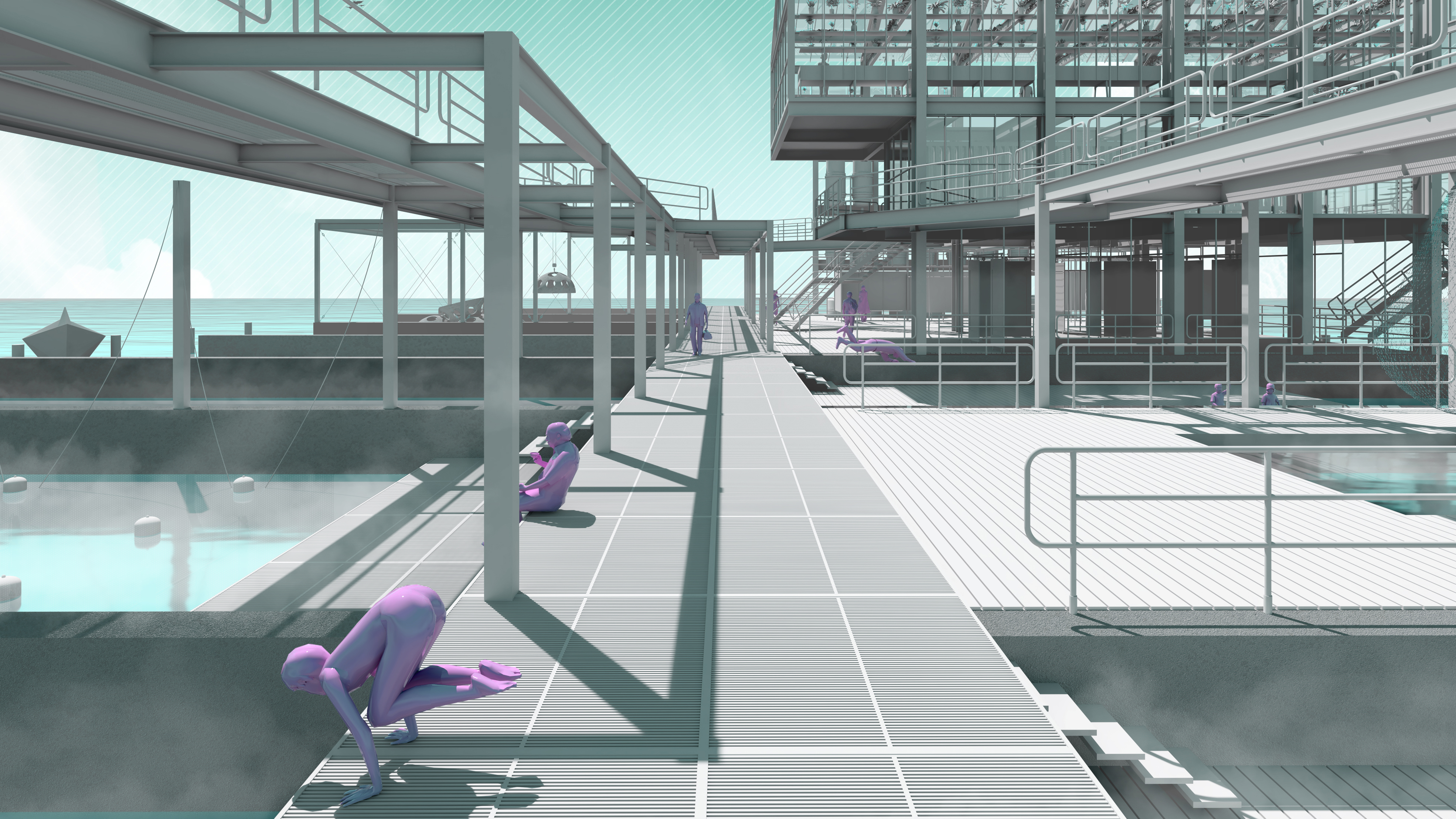
Coastal Attachment
Antofagasta, Chile
Submission for Arch Out Loud’s “Warming” Competition.
Team: Luis Arjona, Jonathan Craig, Philip Elmore, Marco Nieto.
[Achievements]
- Awarded “Director’s Choice”
- Featured in ArchDaily
- Featured in Archinect
- Featured in Bustler
Given the ever-changing and tempestuous conditions of our world today, it’s impossible to tell what our future might look like as climatic conditions continue to deteriorate. Our guess is as good as any, so all we can do is optimistically speculate, pro-act, and fantasize for the beginning of reconciliation with our ecology. SURFACE EX_TENSION aims to mitigate issues of coastal cultivation, over-population, expanding off-shore aquaculture, climatic refugees, and other marina deficiencies. While situated in one location, the following system is a proposal that is not tied to or constrained by a specific geography, but rather attaches itself to the edge condition of a landmass that is the coast. This allows SURFACE EX_TENSION to act as a metaphorical bridge that links together unlike coasts and conditions through an adaptive and organized framework of industrial support structures that bolster social, economical, and commercial aspects to better serve both humans and nature.
![]()
This specific version of SURFACE EX_TENSION is located off the coast of Antofagasta, a port-city in northern Chile. Chile occupies a long, 200-mile wide strip of land that stretches over 2,670 miles South to North, covering everything from the frigid Austral Zone to the desolate scenes of the great Norte Grande. Antofagasta finds itself in the dramatic East-West axis, where it stares peripherally at both the vast Pacific Ocean and the driest area on the planet, the Atacama desert. Due to the incredibly varied climate presented in such a short span, SURFACE EX_TENSION exists in this location in order to illustrate the potential and malleable nature of this model and offer insight into how it could be applied to other contrasting or similar regions of the planet.
![]()
The notion of urban territory has remained land-based in its applications and in the language of architectural discourse. Conversely, water has been interpreted mainly as a resource or complementary object, rarely as the key subject of urbanity. The subsequent creation of a coastal extension brings into light the political potential water has as both a speculative claim on territory and a system for bargaining.
![]()
The typology for these structures is inspired by traditional fishing villages found in Asiatic communities. By borrowing certain cues that offer flexibility, the form provides housing, social interaction, farming systems, coral reefs, desalination stations, and layered opportunities for sustainable innovation.
![]()
The creation of a greenhouse environment that is surrounded by and filled with both land-based and hydro-grown flora allows for a synchronized setting that provides ample space for aquatic and terrestrial ecologies to thrive with humans as a part of the experience.
Antofagasta, Chile
Submission for Arch Out Loud’s “Warming” Competition.
Team: Luis Arjona, Jonathan Craig, Philip Elmore, Marco Nieto.
[Achievements]
- Awarded “Director’s Choice”
- Featured in ArchDaily
- Featured in Archinect
- Featured in Bustler
Given the ever-changing and tempestuous conditions of our world today, it’s impossible to tell what our future might look like as climatic conditions continue to deteriorate. Our guess is as good as any, so all we can do is optimistically speculate, pro-act, and fantasize for the beginning of reconciliation with our ecology. SURFACE EX_TENSION aims to mitigate issues of coastal cultivation, over-population, expanding off-shore aquaculture, climatic refugees, and other marina deficiencies. While situated in one location, the following system is a proposal that is not tied to or constrained by a specific geography, but rather attaches itself to the edge condition of a landmass that is the coast. This allows SURFACE EX_TENSION to act as a metaphorical bridge that links together unlike coasts and conditions through an adaptive and organized framework of industrial support structures that bolster social, economical, and commercial aspects to better serve both humans and nature.

This specific version of SURFACE EX_TENSION is located off the coast of Antofagasta, a port-city in northern Chile. Chile occupies a long, 200-mile wide strip of land that stretches over 2,670 miles South to North, covering everything from the frigid Austral Zone to the desolate scenes of the great Norte Grande. Antofagasta finds itself in the dramatic East-West axis, where it stares peripherally at both the vast Pacific Ocean and the driest area on the planet, the Atacama desert. Due to the incredibly varied climate presented in such a short span, SURFACE EX_TENSION exists in this location in order to illustrate the potential and malleable nature of this model and offer insight into how it could be applied to other contrasting or similar regions of the planet.
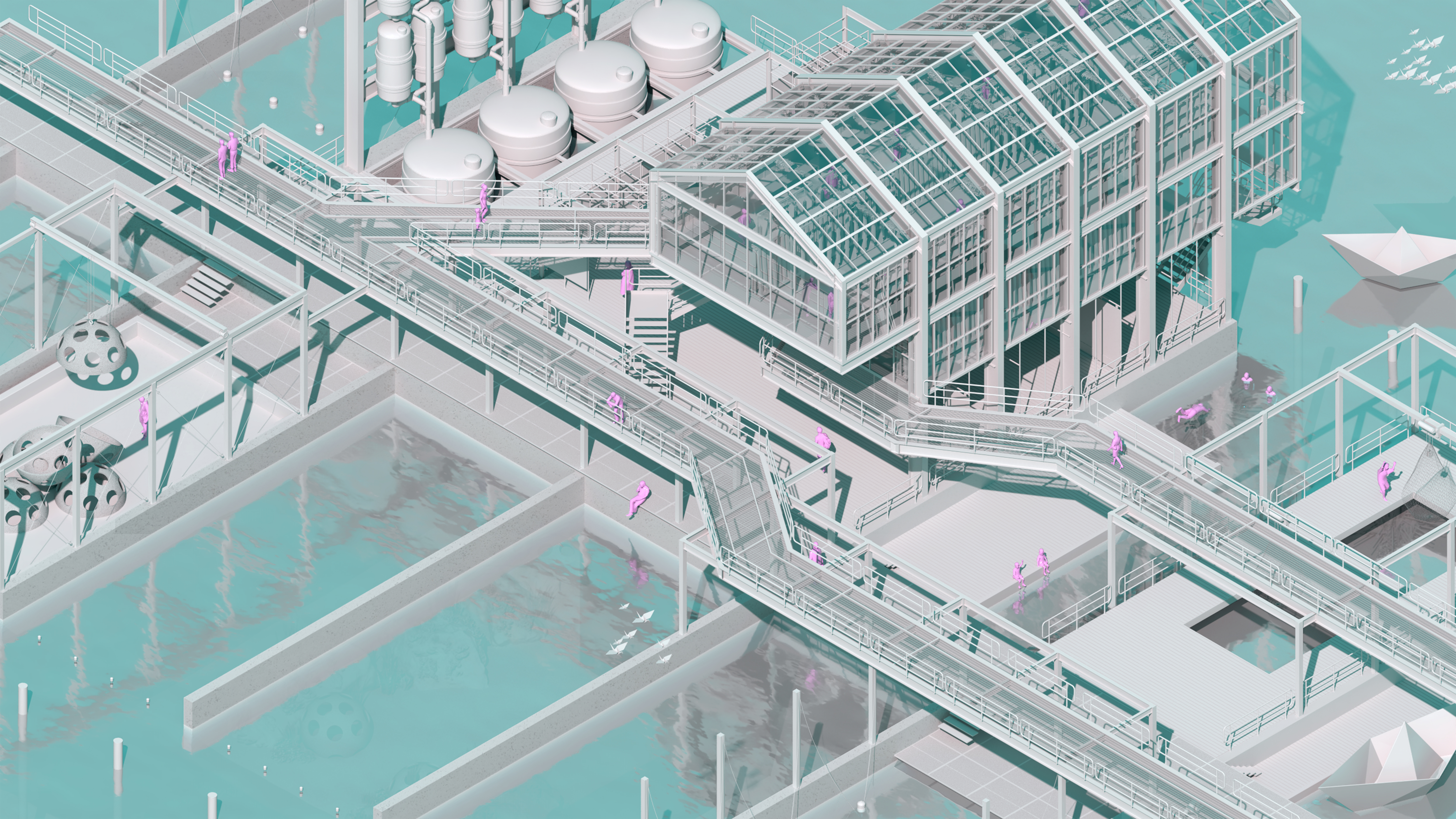
The notion of urban territory has remained land-based in its applications and in the language of architectural discourse. Conversely, water has been interpreted mainly as a resource or complementary object, rarely as the key subject of urbanity. The subsequent creation of a coastal extension brings into light the political potential water has as both a speculative claim on territory and a system for bargaining.
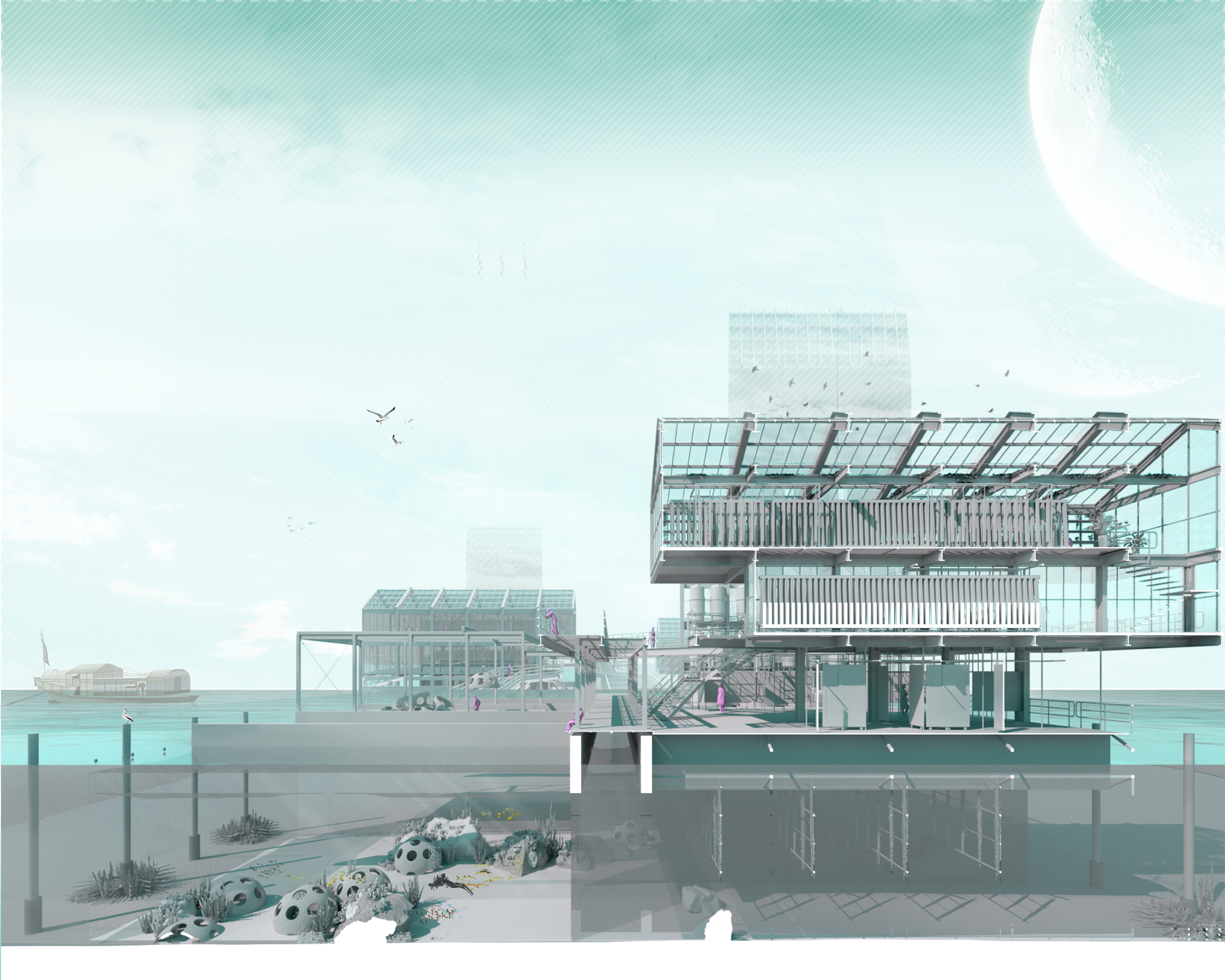
The typology for these structures is inspired by traditional fishing villages found in Asiatic communities. By borrowing certain cues that offer flexibility, the form provides housing, social interaction, farming systems, coral reefs, desalination stations, and layered opportunities for sustainable innovation.
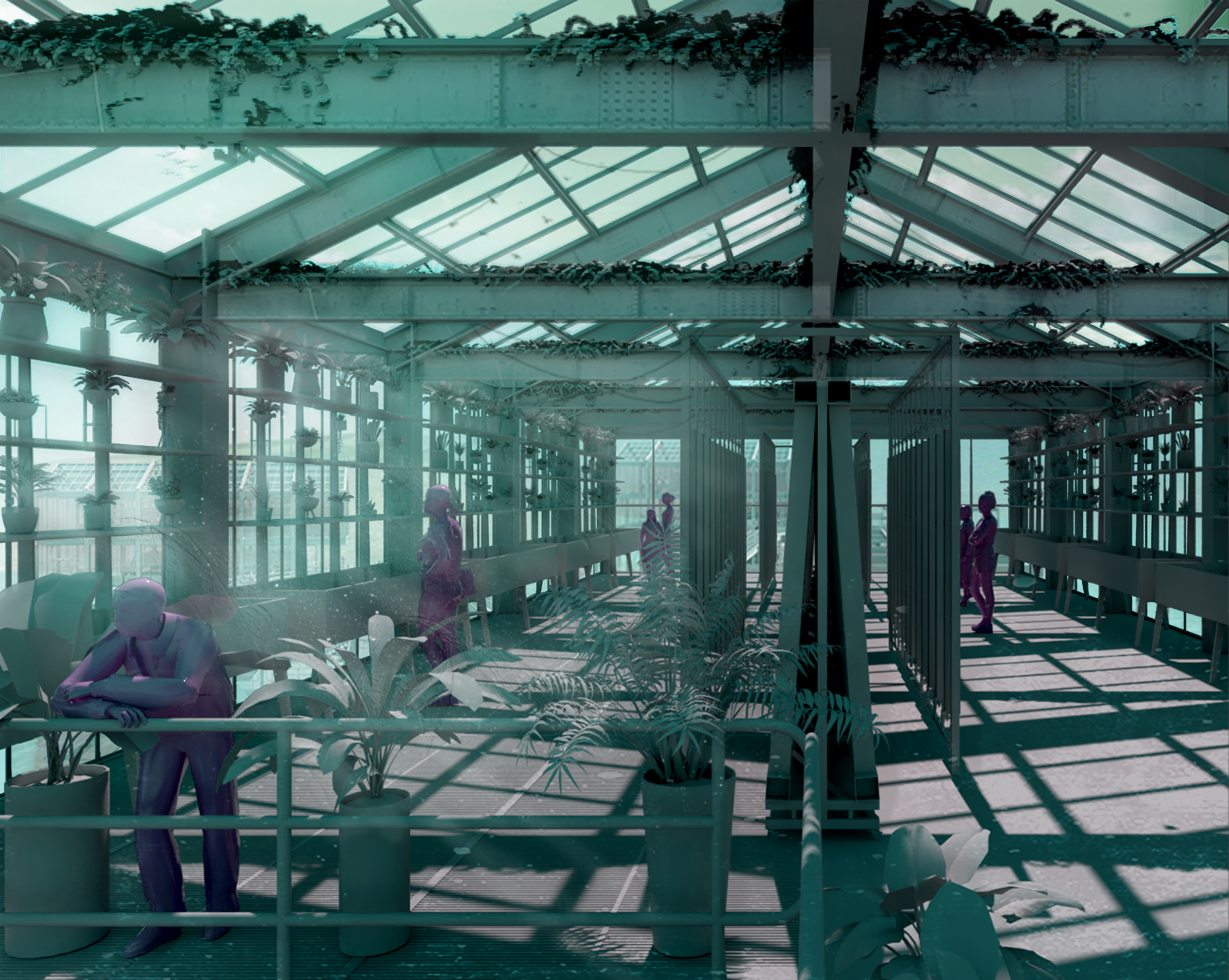
The creation of a greenhouse environment that is surrounded by and filled with both land-based and hydro-grown flora allows for a synchronized setting that provides ample space for aquatic and terrestrial ecologies to thrive with humans as a part of the experience.
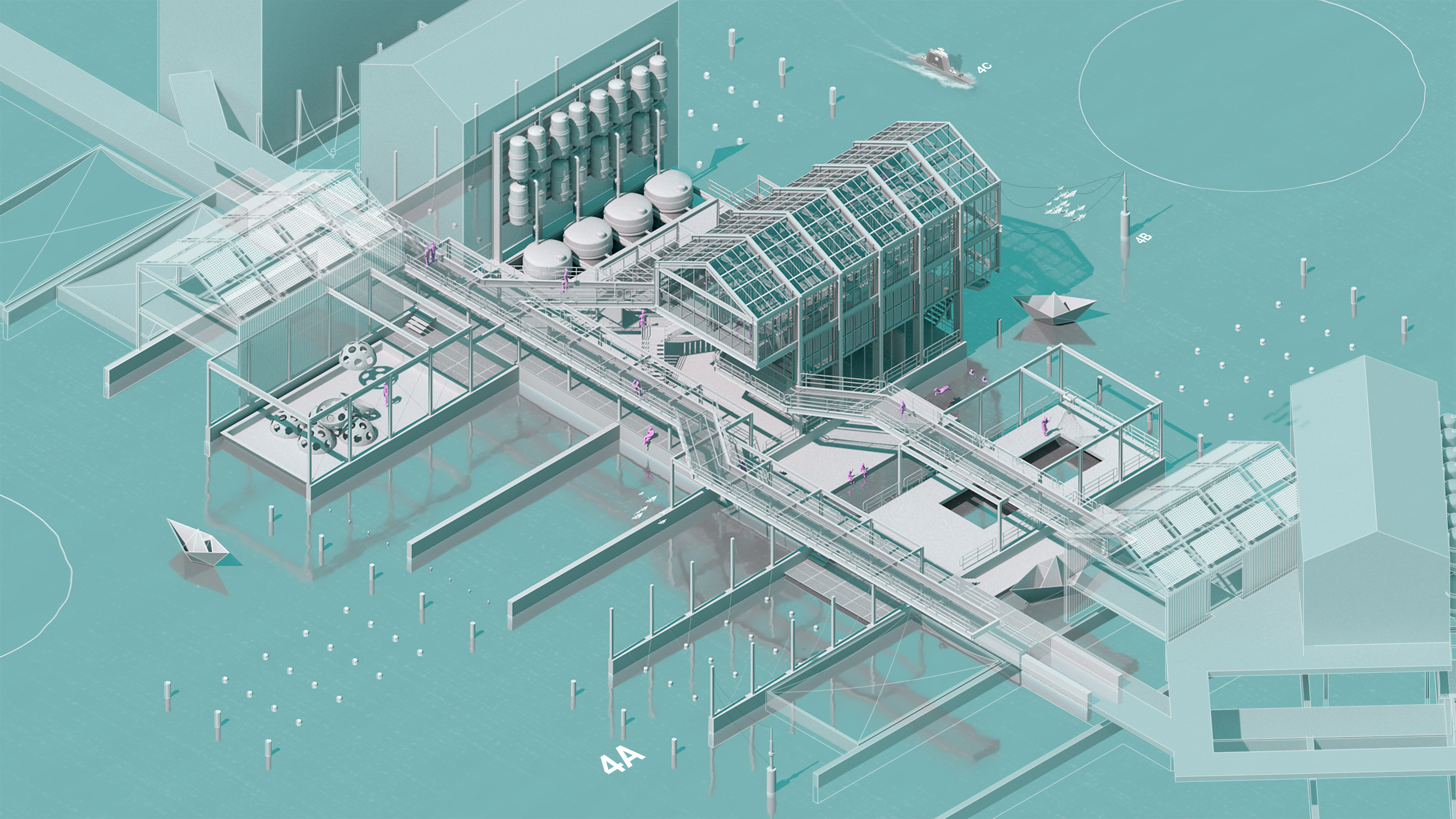
Representing only a segment of an ideal system, this spine covers a wide array of facilities dedicated to creating an aquatic instrument that reconfigures the domain of territoriality and its influence on architecture and planning by focusing on “hydro” driven concepts and not just “terra” derived practices.
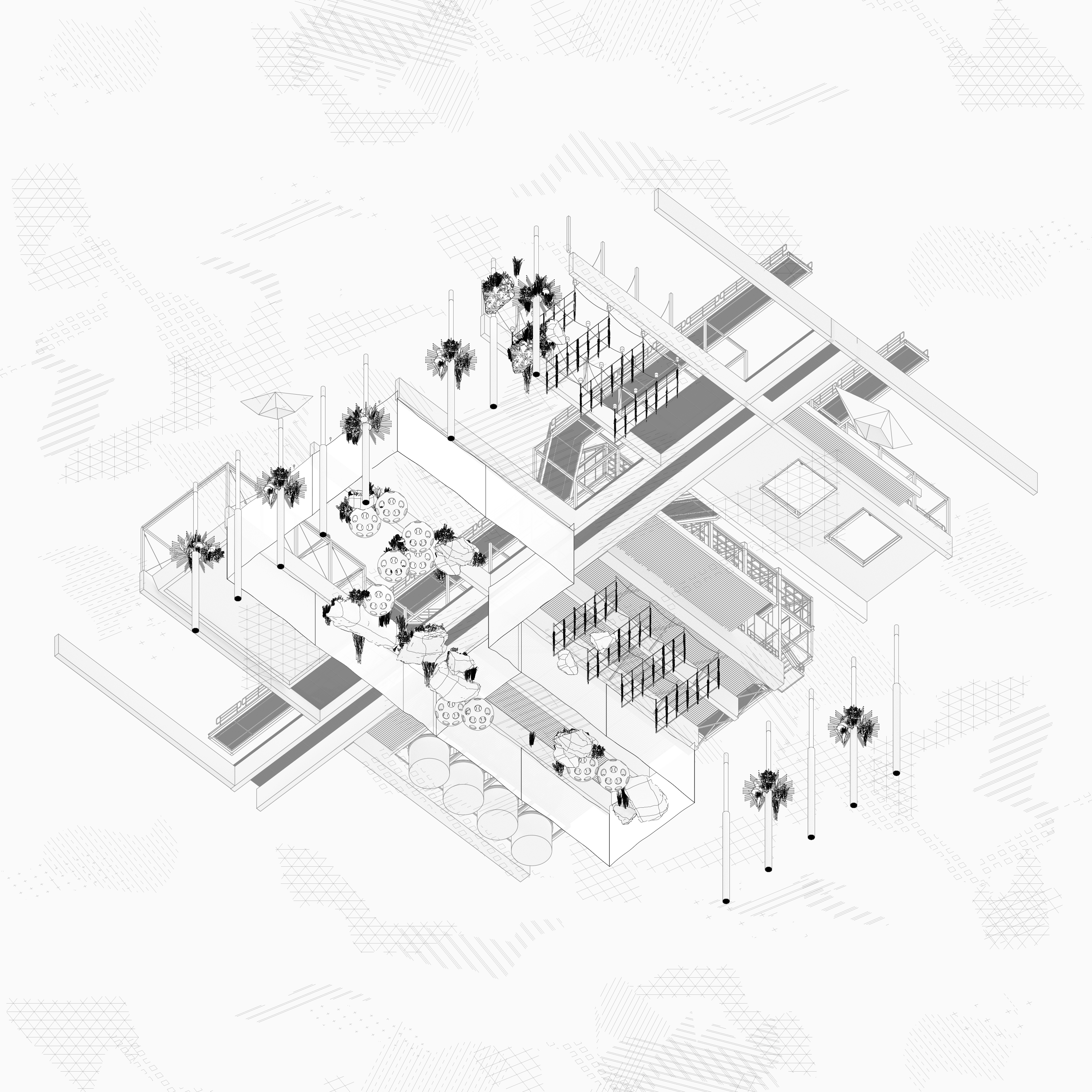


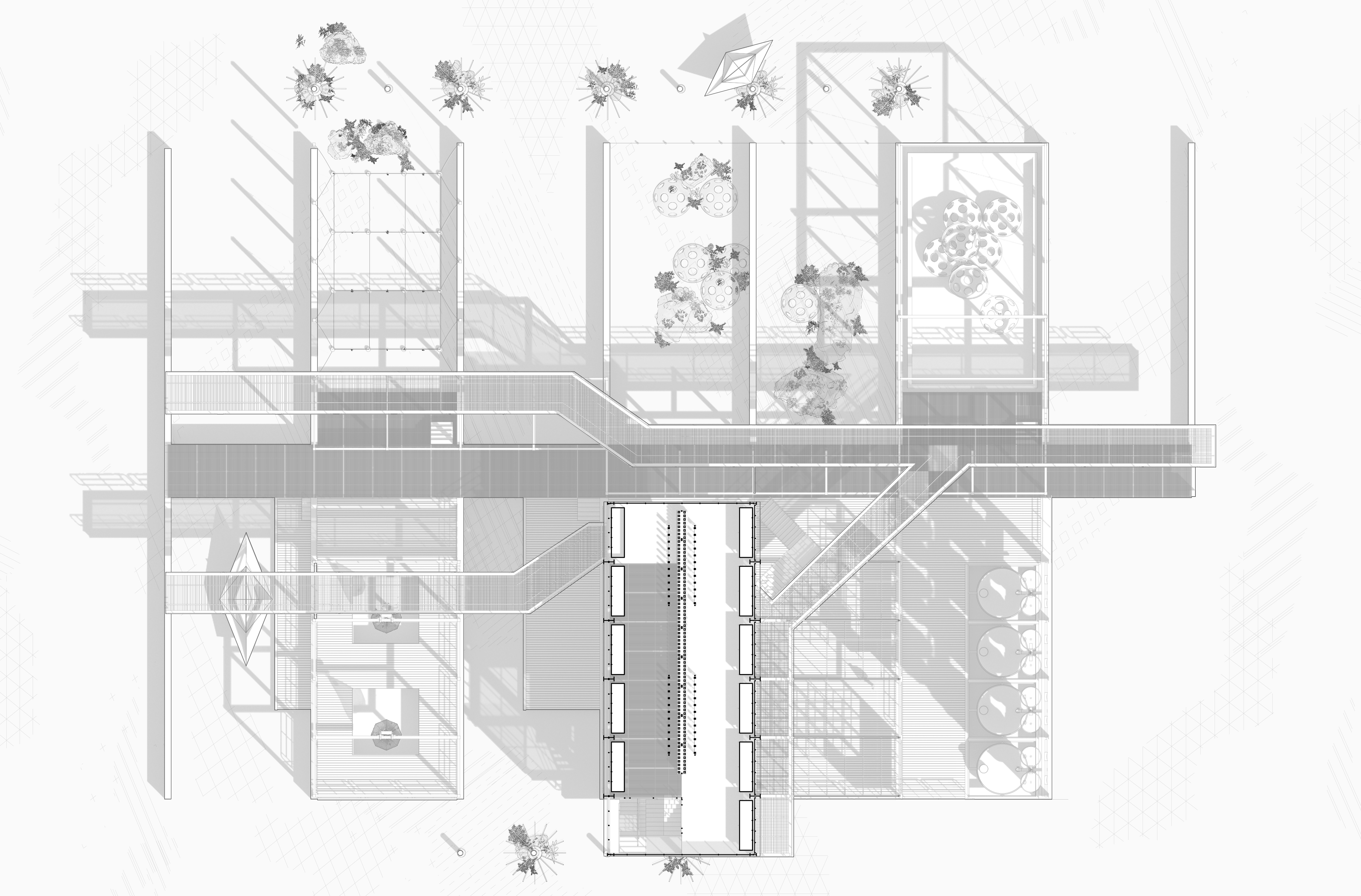
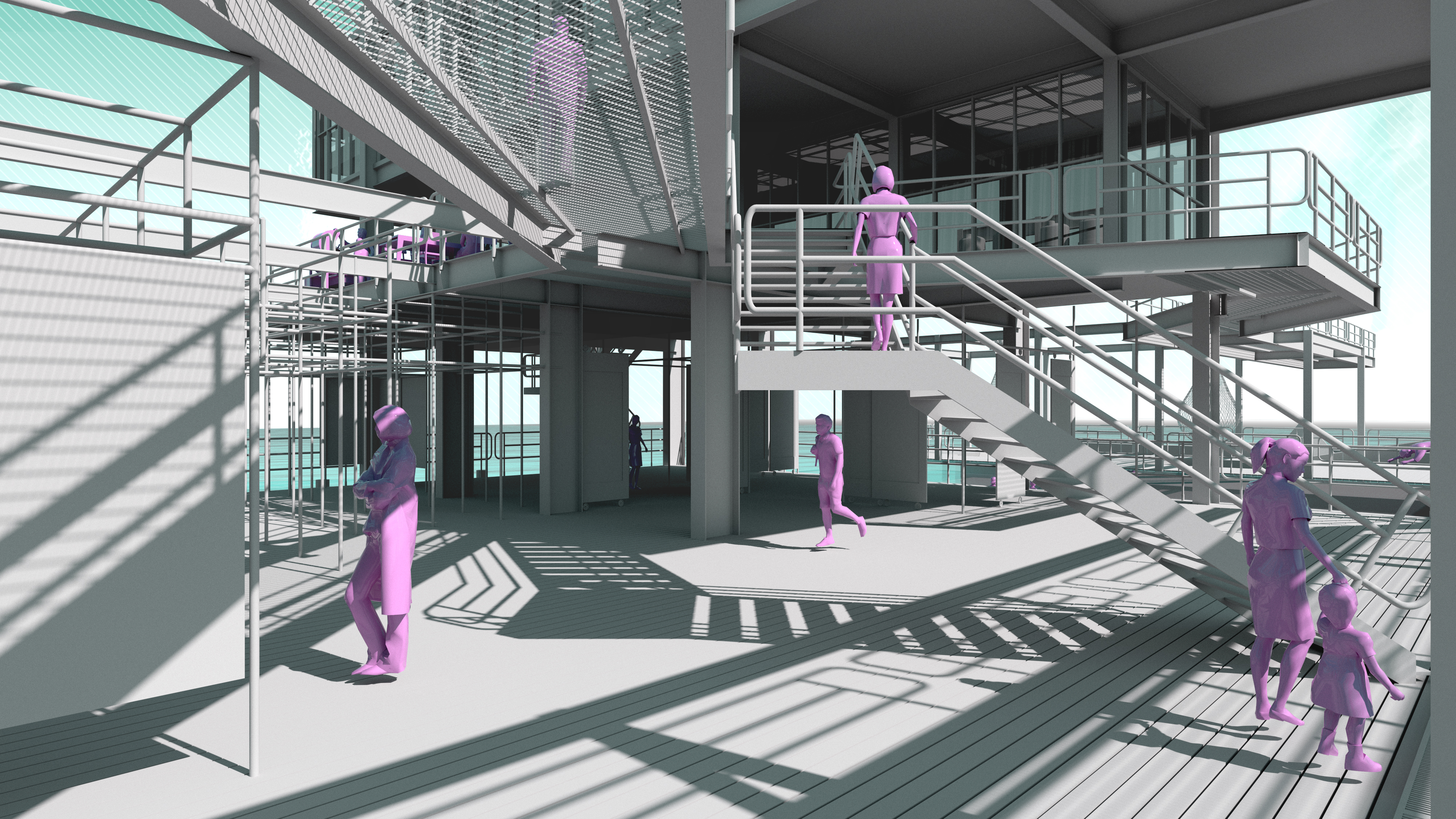

Reflecting on the hopes of creating symbiotic relationships through architecture, SURFACE EX_TENSION begs the question, “What does our future hold and how can we provide spaces that solve issues of climate collapse, increasing density, and territorial appropriation?” Perhaps rather than instituting a rigid set of criteria, a simple suggestion of malleability for climatic interventions can provide a platform for environments to seek the help they need.